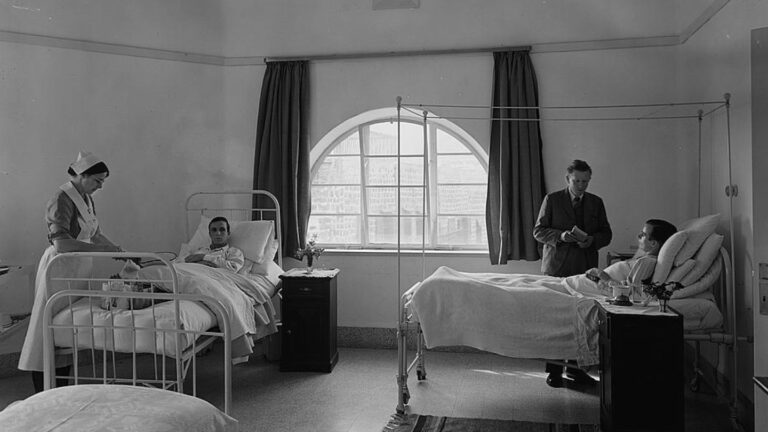It wasn’t exactly on Christmas Day but when General Edmund Allenby entered Jerusalem on December 11, 1917, the event was described as no less than “a Christmas present for the British people.”
Between 1917 and 1948, during three decades of the Mandate, soldiers and civilians from across the Empire celebrated Christmas in the Holy Land.
Even before their conquest of the Ottoman Empire, during the First World War, men and women of the British armed forces managed to make merry in this region, often under the toughest of circumstances.
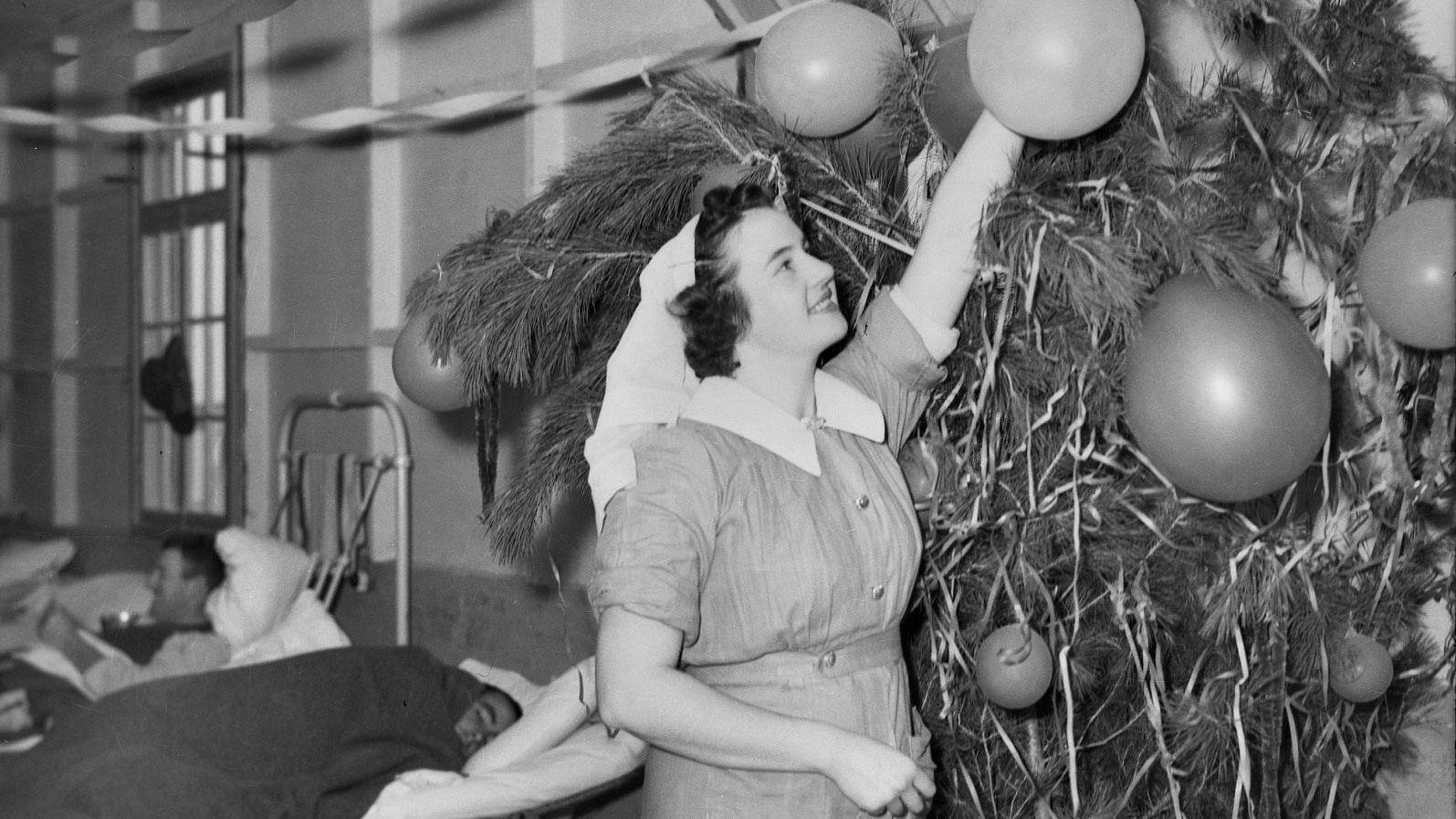
In December 1915, following defeat at Gallipoli, the Australian and New Zealand units were evacuated to Egypt. The ANZAC Mounted Division (comprising Australian Light Horse soldiers, New Zealand mounted rifles and British horse artillery) was formed in March 1916 for service in Egypt and Palestine, fighting and winning almost all major battles across the Sinai Peninsula during 1916, and from Gaza to Jerusalem in 1917. During that time, the ANZACs were encamped, at various points, near Rishon LeZion, Beersheba and the Jordan Valley.
So, how to celebrate Christmas? With biscuits, bully beef and beer, of course!
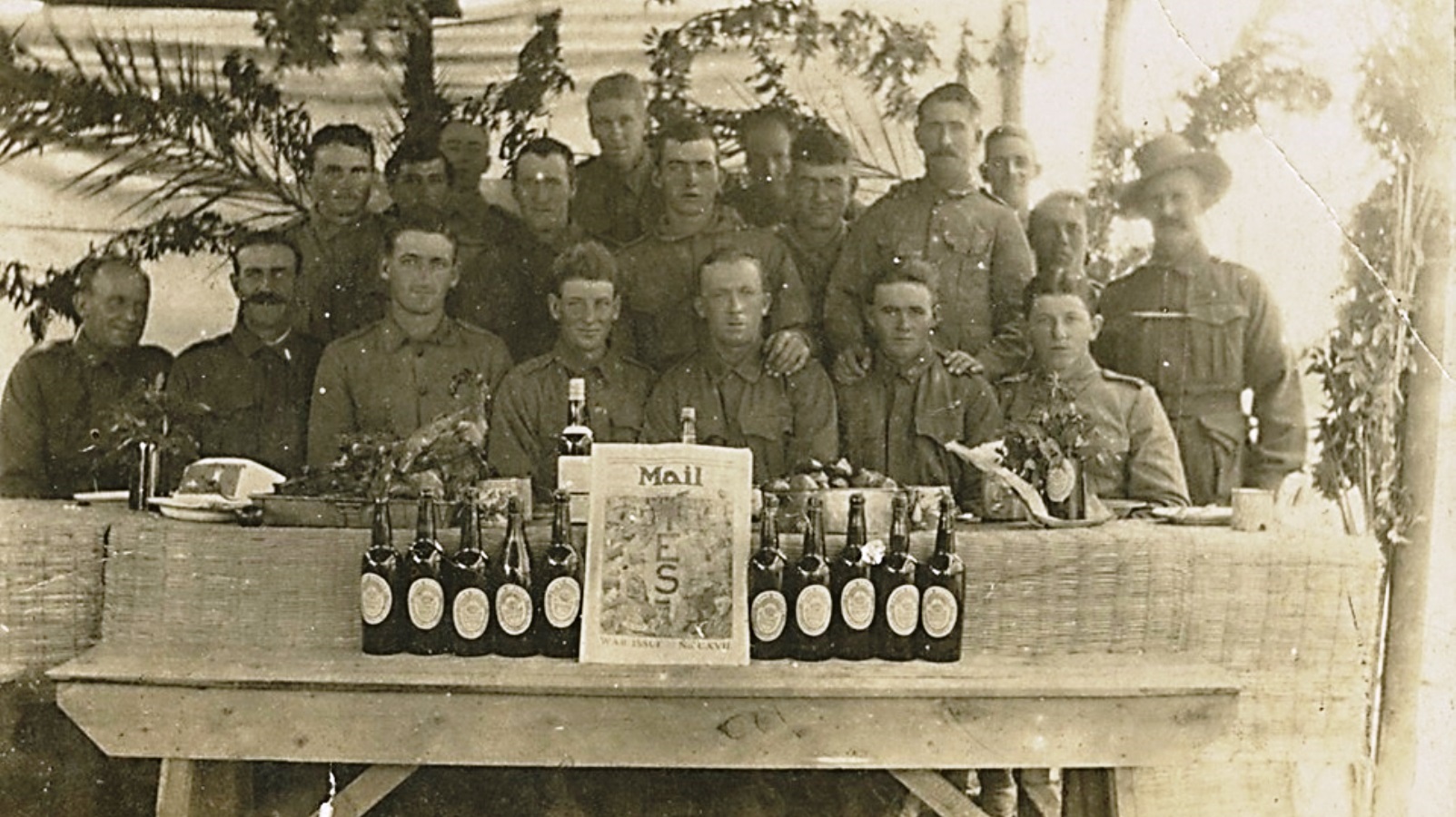
In 1917, the ANZAC Division sent their loved ones a holiday card listing the division’s battle stations during the Great War: Egypt 1914, Gallipoli 1915, Sinai 1916 and Palestine 1917.
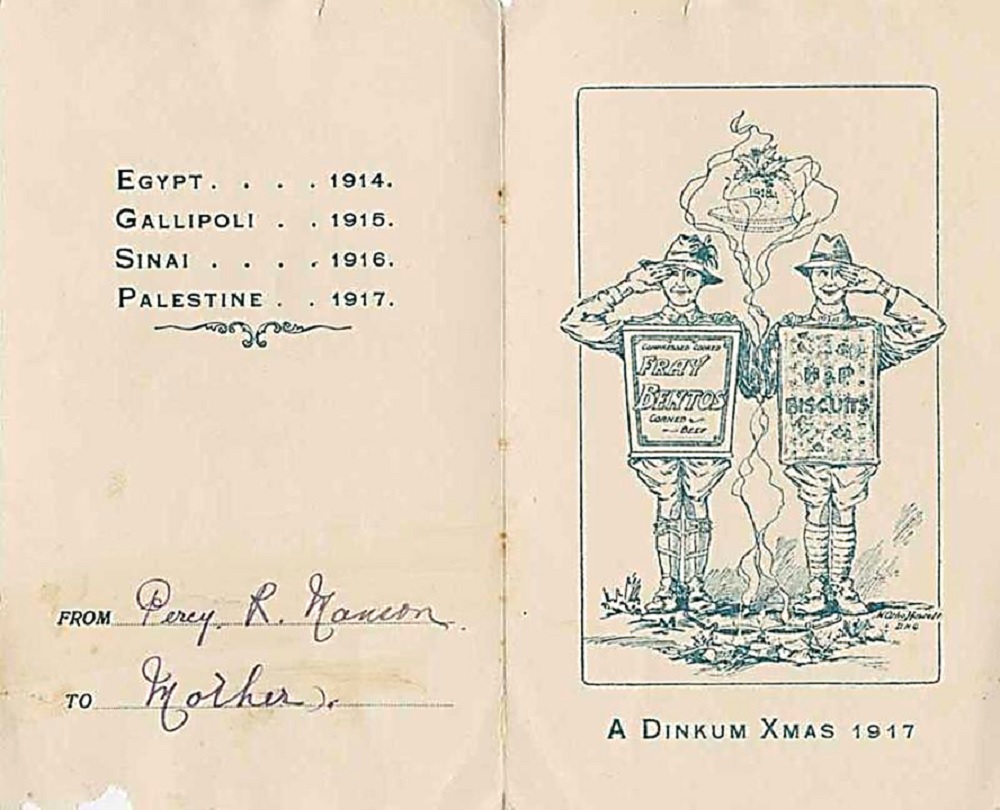
The humorous cartoon illustration of two saluting servicemen, captioned “A DINKUM XMAS 1917,” is well described by the New Zealand Mounted Rifles Association historian Steve Butler: “The pen and ink drawing is of an Australian Light horseman wearing an enlarged tin of ‘Fray Bentos’ bully-beef, and his partner a New Zealand Mounted Rifleman wears a large ‘Huntly & Palmer’ biscuit cracker – a reference to the rather sparse fare supplied to the men in the field –[while] at their feet two dixies bubble away on a camp fire, lifting smells of a home cooked Christmas Pudding the men hope to eat at their next Christmas of 1918.”
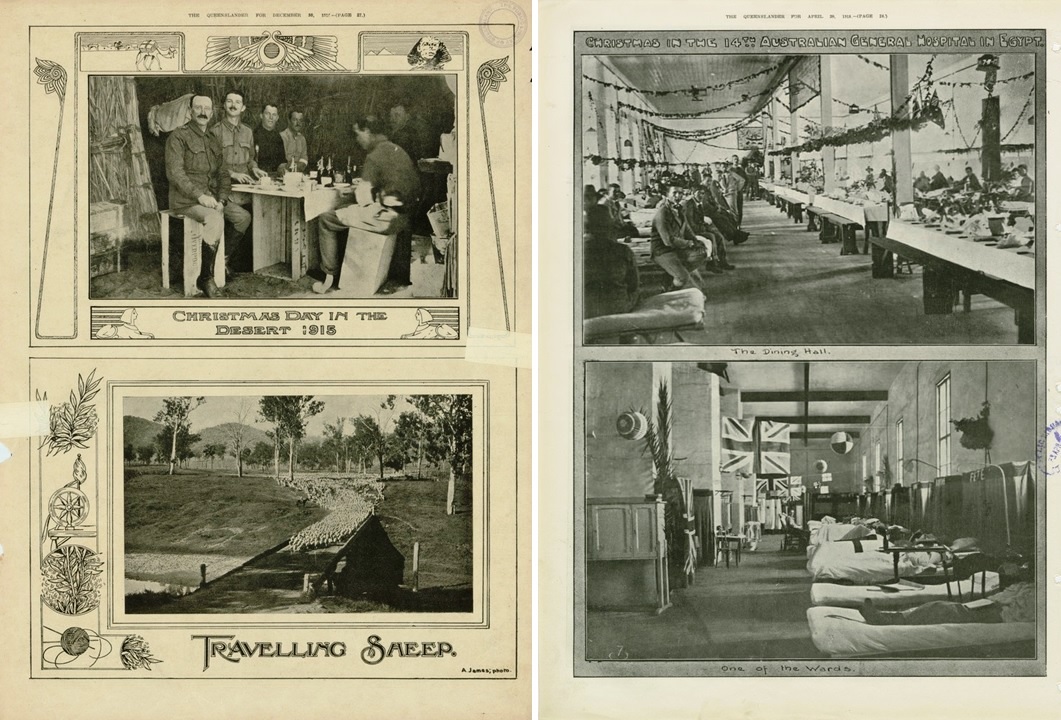
The Imperial Camel Corps, for its part, issued a card with a photo of cameleers from Australia, Britain, New Zealand and India – the four nations represented within the brigade. On the front, the red, black, green and blue flag represented the four brigade battalions.
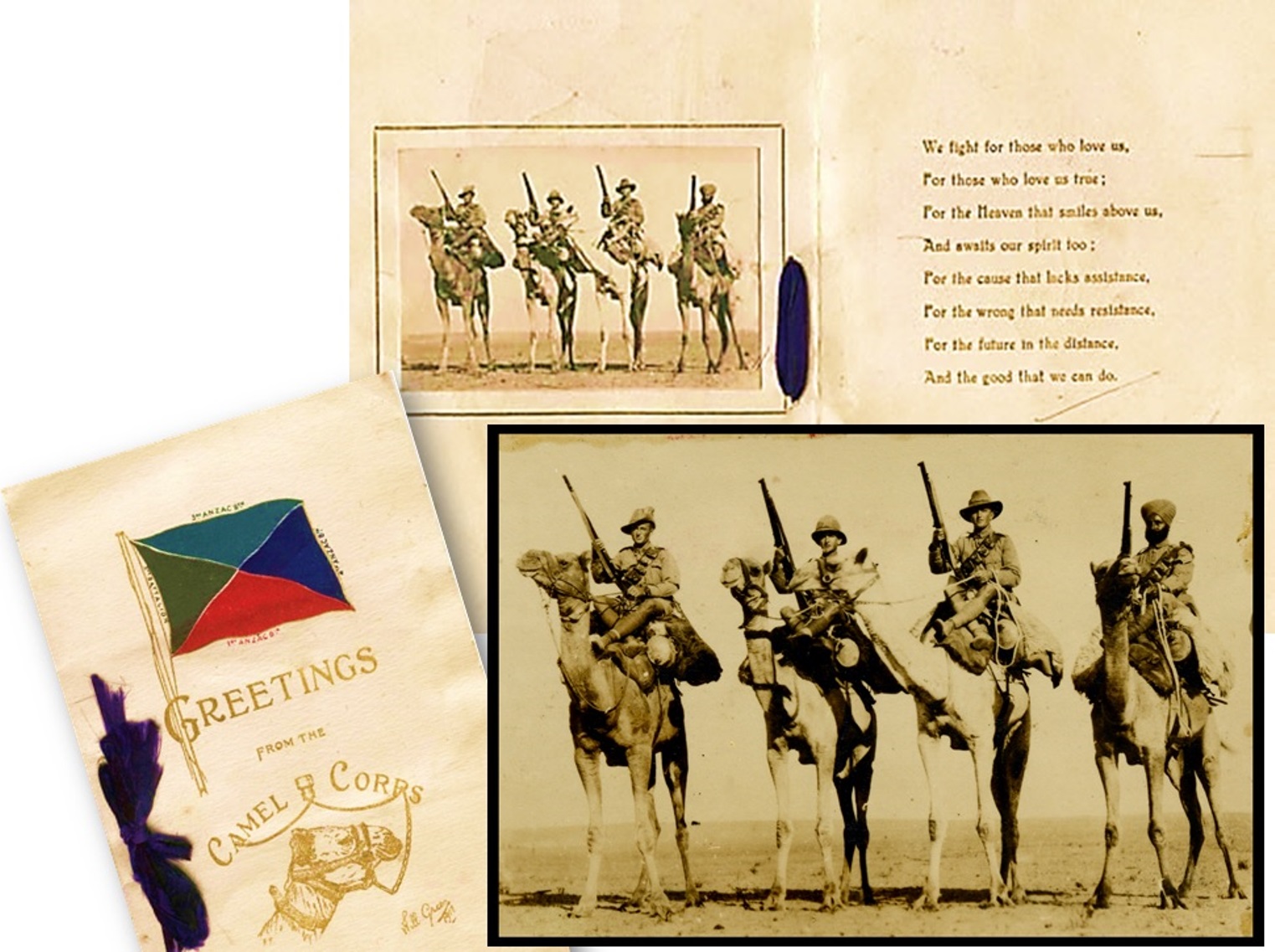
Christmas dinners were featured in the newspapers back home, whether in the field or at the Australian General Hospital in Cairo.
The 10th Australian Light Horse had the honor of being the first Australian Regiment to enter the Jerusalem with Allenby, who elected to enter on foot as a mark of respect to the city’s Muslim and Jewish residents.
Australian War Memorial historian Robyn Van Dyk writes: “The historic and religious significance of Jerusalem was not lost on the Australians, with many writing in letters and diaries of their excitement in glimpsing the holy city for the first time.”
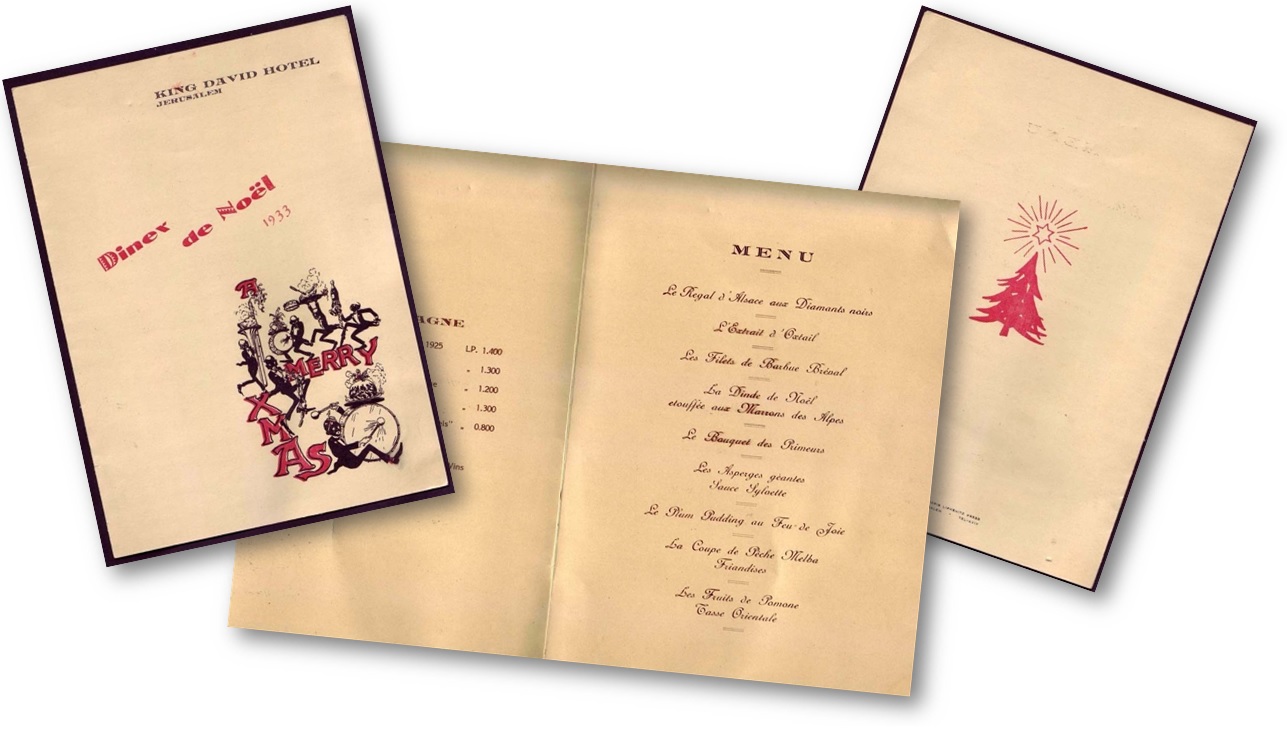
Under the British administration, the city of Jerusalem was modernized. Along with new garden suburbs, luxury hotels were built: the magnificent King David Hotel opened in 1931, and the equally glorious West Jerusalem YMCA opened in 1933 and hosted annual Christmas pageants.
In 1919, Sarafand Garrison (today’s IDF Camp Tzrifin) was established for the British armed forces stationed in Palestine. With the advent of the Second World War in 1939, British military camps throughout the region were established or expanded.

The airfield built in 1936 near the German Templer community of Wilhelma became RAF Station Lydda. During the Second World War, both RAF Lydda and RAF Abu Sueir in the Sinai served as military airfields for the British Royal Air Force and the US Army Air Force during the North African Campaign against Axis forces. Judging from the menus, RAF Christmas dinners at Abu Sueir were a festive affair, serving up everything from soup to nuts – literally – along with holiday treats like Christmas pudding.
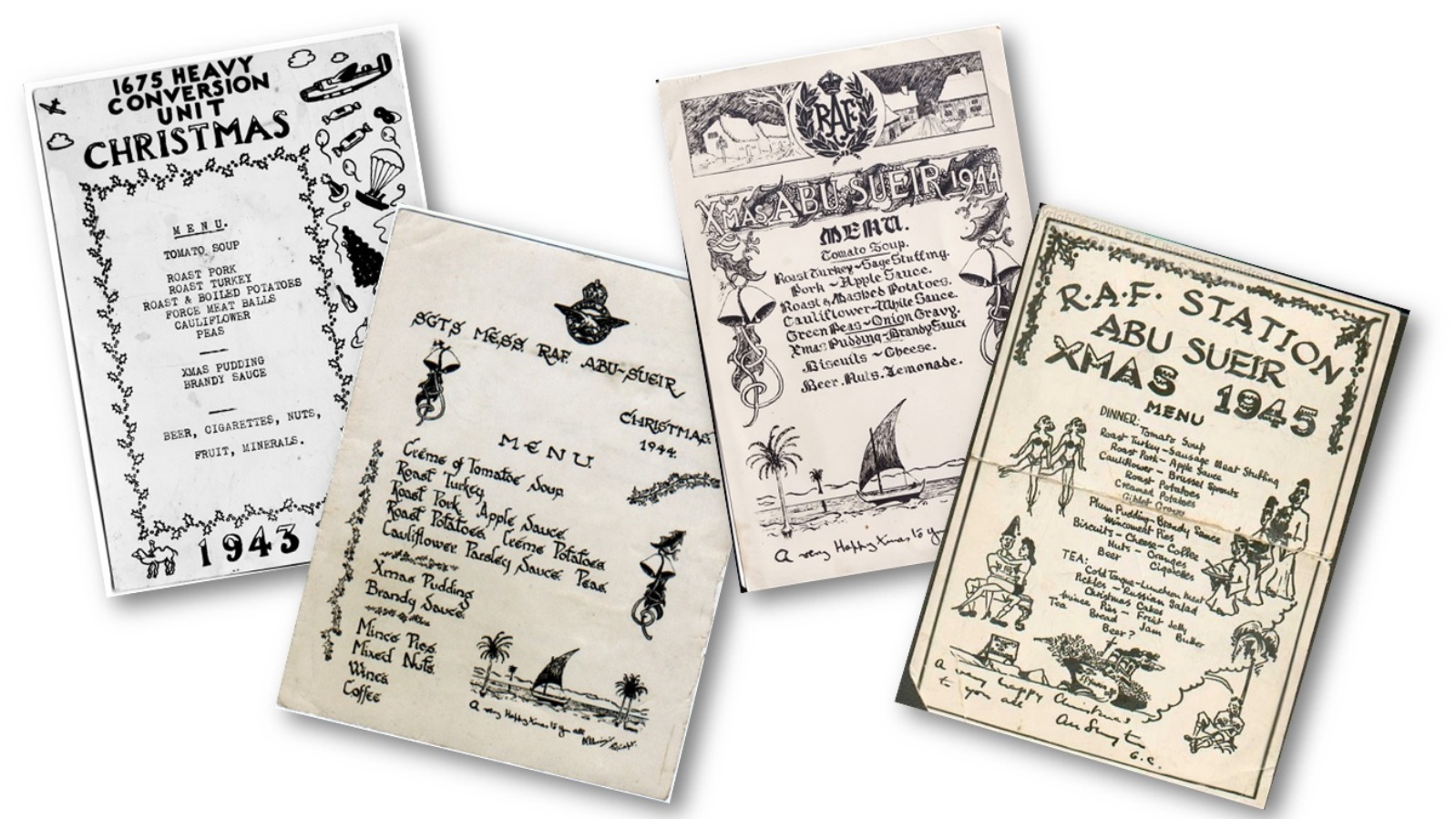
More modest celebrations were held at places like the 1st Australian Convalescent Depot at KfarVitkin, the Australian military YMCA, the Australian Soldier’s Club, the 1st Australian General Hospital in Gaza, and the 9th Australian Division Headquarters at Camp Julis (still in operation under the IDF today), where Christmas Day tradition dictated that officers serve the enlisted men.
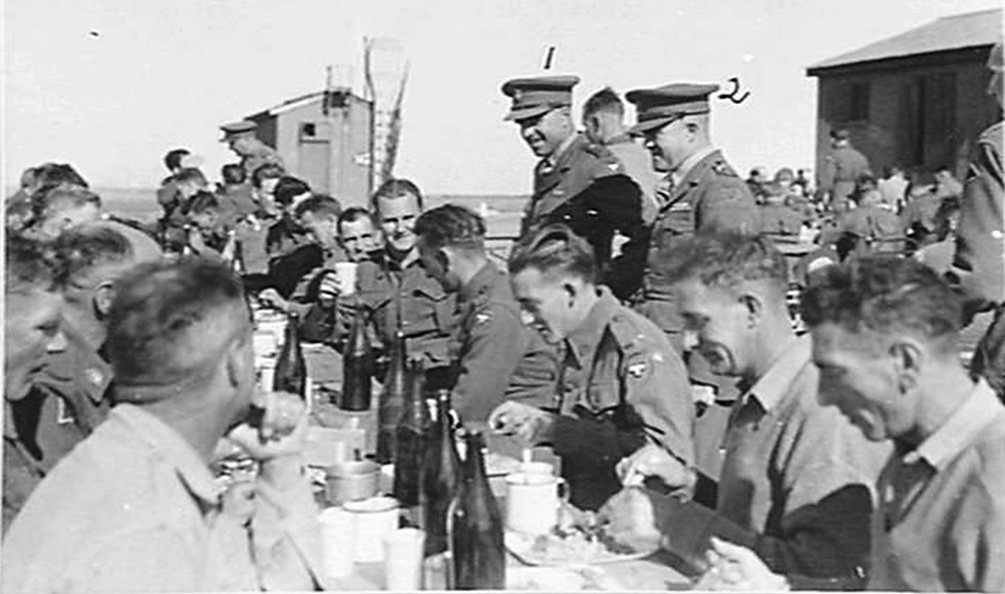
To combat the problem of shipping bulky mail between soldiers and their families, the British Post Office introduced the Airgraph Service in 1941 and it was made available for forces serving in Palestine in 1942. Airgraphs employed the Kodak Microfilm system, Recordak, so that messages – including Christmas and New Year greetings – could be sent efficiently by air from far-flung locations to England where they were printed out and delivered.
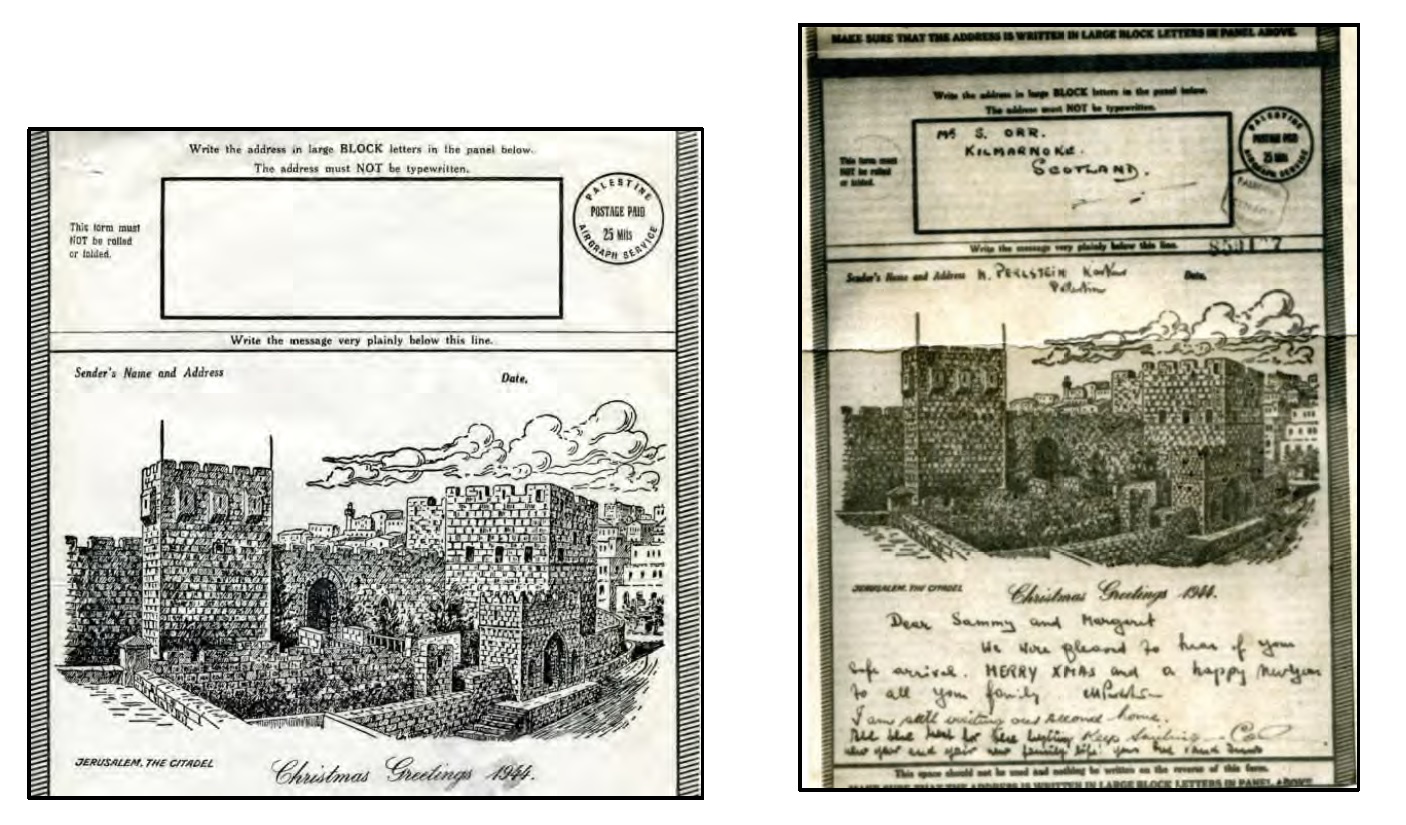
The Second World War ended in 1945. Tensions and violence in the region increased as the expiration date of the Mandate loomed. By mid-May 1948, the only British forces remaining were in Haifa and Jerusalem. On May 14th, the British High Commissioner in Palestineleft Haifa by ship.
The British Mandate was over, its soldiers demobilized and police force disbanded, all in plenty of time to celebrate Christmas at home.




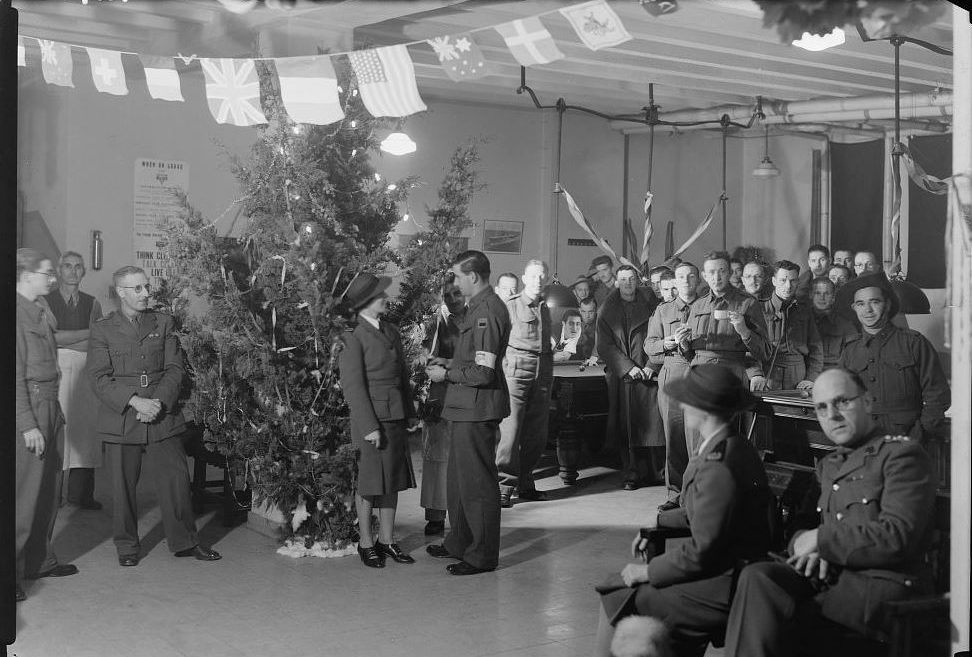










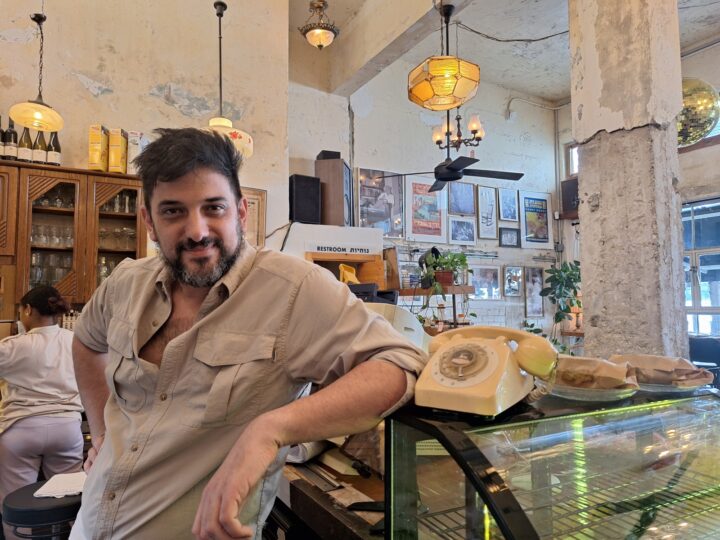
![Elections 1977 – Likud posters] In 1977, Menahem Begin led an election upset as Israel’s first non-Labor prime minister. Credit: GPO Elections 1977 – Likud posters] In 1977, Menahem Begin led an election upset as Israel’s first non-Labor prime minister. Credit: GPO](https://static.israel21c.org/www/uploads/2019/09/Elections_1977___Likud_posters_-_GPO-768x432.jpg)
